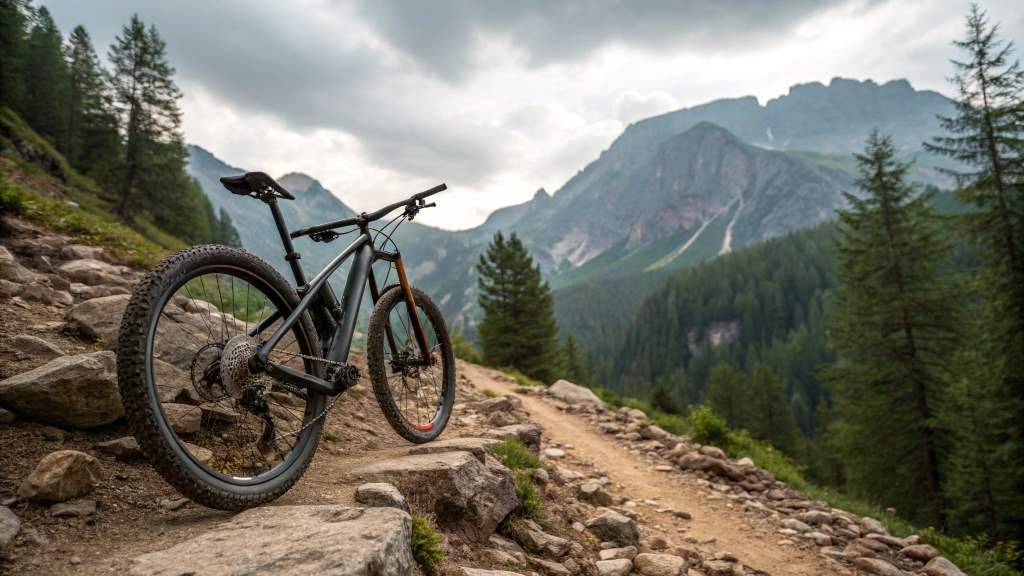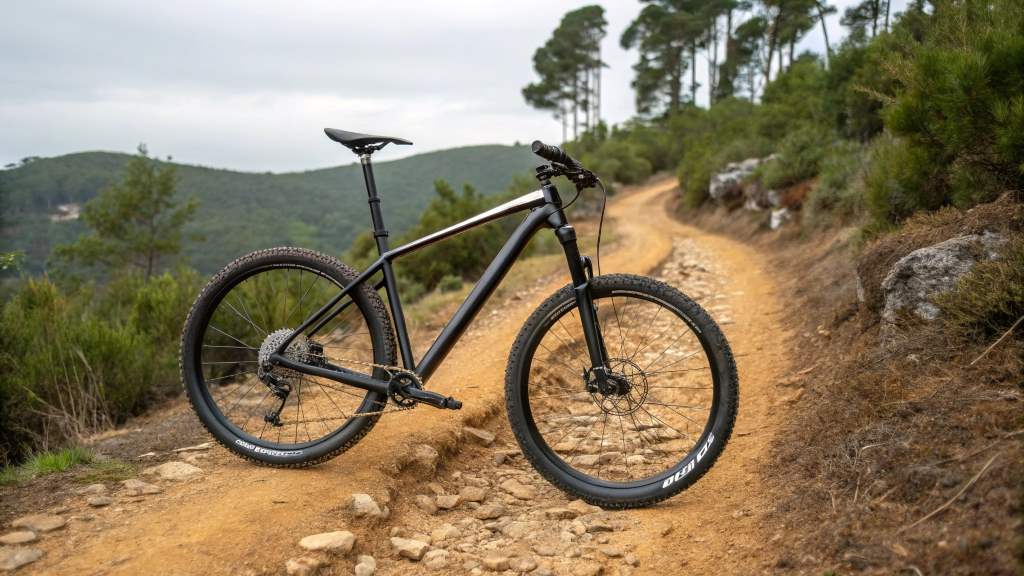Mountain biking, a sport celebrated for its adrenaline-pumping descents and challenging climbs, often conjures images of burly bikes equipped with wide, knobby tires. These tires, designed to conquer rugged terrain, seem like a prerequisite for any off-road adventure. However, a lingering question persists: can you mountain bike with thin tires? The answer, as with many things in the cycling world, is nuanced and depends heavily on context. Let’s delve deep into the intricacies of tire selection and explore whether thin tires have a place on the mountain bike trail.
Understanding Tire Width and Its Impact on Mountain Biking
The width of a mountain bike tire plays a crucial role in its performance. Wider tires, typically ranging from 2.3 inches to 2.8 inches or even wider in plus-size and fat bike categories, offer several advantages. They provide a larger contact patch with the ground, increasing traction and stability, especially on loose or uneven surfaces. This enhanced grip allows riders to confidently navigate challenging terrain, including rocky descents, root-strewn trails, and slippery mud. Furthermore, wider tires offer greater air volume, which translates to a more comfortable ride by absorbing bumps and vibrations. This cushioning effect reduces rider fatigue and enhances control, particularly on long and demanding trails. Also, remember to regularly check mountain bike chain condition to ensure smooth shifting and overall drivetrain performance.
Conversely, thinner tires, generally those below 2.2 inches in width, present a different set of characteristics. They offer reduced rolling resistance, making them more efficient on smoother surfaces and climbs. This efficiency translates to faster acceleration and higher speeds, which can be advantageous in certain situations. Thinner tires also tend to be lighter, contributing to a more agile and responsive bike. However, their smaller contact patch and lower air volume result in reduced traction and less cushioning, making them less suitable for rough and technical terrain.

The Terrain Dictates Tire Choice: Where Thin Tires Might Shine
While wider tires are generally preferred for most mountain biking scenarios, there are specific situations where thin tires might be a viable, or even advantageous, option.
- Smooth, Hardpack Trails: If your local trails consist primarily of smooth, hardpack surfaces, such as groomed fire roads or well-maintained singletrack, thin tires can provide a significant advantage in terms of speed and efficiency. The reduced rolling resistance will allow you to cover more ground with less effort, making your rides more enjoyable.
- Gravel Roads and Light Trail Riding: Many gravel bikes, which are designed for a mix of paved and unpaved surfaces, utilize tires in the 35mm to 45mm range, which can be considered relatively thin for mountain biking standards. These tires offer a good balance of efficiency and traction, making them suitable for light trail riding and gravel roads.
- Climbing-Focused Rides: When tackling steep climbs, the weight of your tires can make a noticeable difference. Thinner, lighter tires can help you conserve energy and maintain momentum, making those grueling ascents more manageable.
- Racing on Specific Courses: Some cross-country (XC) race courses feature smoother sections and less technical terrain, where the speed advantage of thin tires can outweigh the benefits of wider tires. Professional racers often make calculated tire choices based on the specific demands of the race course.
The Limitations of Thin Tires on Mountain Bike Trails
Despite their potential advantages in specific situations, thin tires have significant limitations when it comes to tackling challenging mountain bike trails.
- Reduced Traction and Control: The smaller contact patch of thin tires results in reduced traction, making it difficult to maintain grip on loose surfaces, steep descents, and technical sections. This can lead to increased risk of slipping, sliding, and losing control.
- Increased Risk of Punctures: Thin tires are more susceptible to punctures, especially when encountering sharp rocks, roots, or other trail debris. Their thinner sidewalls offer less protection against cuts and pinch flats.
- Less Cushioning and Comfort: The lower air volume of thin tires provides less cushioning, resulting in a harsher ride. This can lead to increased fatigue and discomfort, particularly on long and rough trails.
- Poor Performance in Mud and Loose Conditions: Thin tires struggle to maintain traction in mud and loose conditions, as they tend to sink and lose grip. This can make riding in these conditions extremely challenging and even dangerous.
- Compromised Stability: The narrower profile of thin tires can lead to reduced stability, particularly when cornering at high speeds or navigating technical terrain.
Factors to Consider When Choosing Tire Width
When deciding whether to use thin tires on your mountain bike, consider the following factors:
- Terrain: The type of terrain you plan to ride is the most critical factor. If you primarily ride on smooth, hardpack trails or gravel roads, thin tires might be a viable option. However, if you frequently encounter rough, technical terrain, wider tires are essential.
- Riding Style: Your riding style also plays a role in tire selection. If you prioritize speed and efficiency, thin tires might be appealing. However, if you value traction, control, and comfort, wider tires are more suitable.
- Rider Weight and Skill Level: Heavier riders and less experienced riders generally benefit from wider tires, as they provide greater stability and cushioning.
- Bike Type: The type of mountain bike you ride can also influence tire choice. Cross-country bikes, designed for speed and efficiency, often use narrower tires than trail bikes or enduro bikes, which are built for more aggressive riding.
- Tire Pressure: Tire pressure is another crucial factor that affects tire performance. Lower tire pressure increases the contact patch and improves traction, but it also increases the risk of punctures. It’s essential to find the optimal tire pressure for your weight, riding style, and terrain.
The Importance of Tire Tread Pattern
In addition to tire width, the tread pattern also plays a significant role in tire performance. Tires with aggressive tread patterns offer greater traction on loose and technical terrain, while tires with smoother tread patterns are more efficient on hardpack surfaces. When using thin tires, it’s essential to choose a tread pattern that provides adequate grip for the terrain you plan to ride.
Setting Up Your Thin Tires for Mountain Biking
If you decide to experiment with thin tires on your mountain bike, consider the following setup tips:
- Tubeless Setup: A tubeless setup can significantly reduce the risk of punctures and allow you to run lower tire pressures for improved traction.
- Tire Inserts: Tire inserts can provide additional protection against punctures and rim damage, especially when running lower tire pressures.
- Experiment with Tire Pressure: Experiment with different tire pressures to find the optimal balance of traction, comfort, and puncture resistance.
- Ride Smoothly and Conservatively: When riding with thin tires, it’s essential to ride smoothly and conservatively, especially on challenging terrain. Avoid sharp impacts and aggressive cornering.
People Also Ask (FAQs)
Q: Can I put road bike tires on a mountain bike?
A: While technically possible, it’s not recommended. Road bike tires are designed for smooth pavement and lack the traction and durability required for mountain biking.
Q: What is the best tire pressure for thin mountain bike tires?
A: The optimal tire pressure depends on several factors, including tire width, rider weight, and terrain. Experiment with different pressures to find what works best for you.
Q: Are thin tires faster on climbs?
A: Yes, thin tires generally offer lower rolling resistance and are lighter, which can make them faster on climbs, especially on smooth surfaces.
Q: Will thin tires make my mountain bike lighter?
A: Yes, thin tires are typically lighter than wider tires, which can contribute to a lighter overall bike weight.
Q: Can I use thin tires in the winter?
A: Thin tires are generally not recommended for winter riding, especially in snowy or icy conditions. Wider tires with aggressive tread patterns provide better traction and stability in these conditions.
Conclusion
In conclusion, while wider tires are generally preferred for most mountain biking scenarios, thin tires can be a viable option for specific situations, such as smooth, hardpack trails, gravel roads, and climbing-focused rides. However, it’s crucial to understand the limitations of thin tires and choose them wisely based on your terrain, riding style, and skill level. Ultimately, the best tire choice is the one that allows you to ride safely and confidently while enjoying the thrill of the trail. Always prioritize safety and choose your equipment based on the conditions you expect to encounter.

Welcome to outdoorxsports.com! I’m Russell, your guide to the awesome world of mountain biking. This blog is all about building a community of riders who love to share their passion for the sport. Expect inspiring stories, local trail recommendations, fun challenges, and tips for making the most of your time on two wheels.

